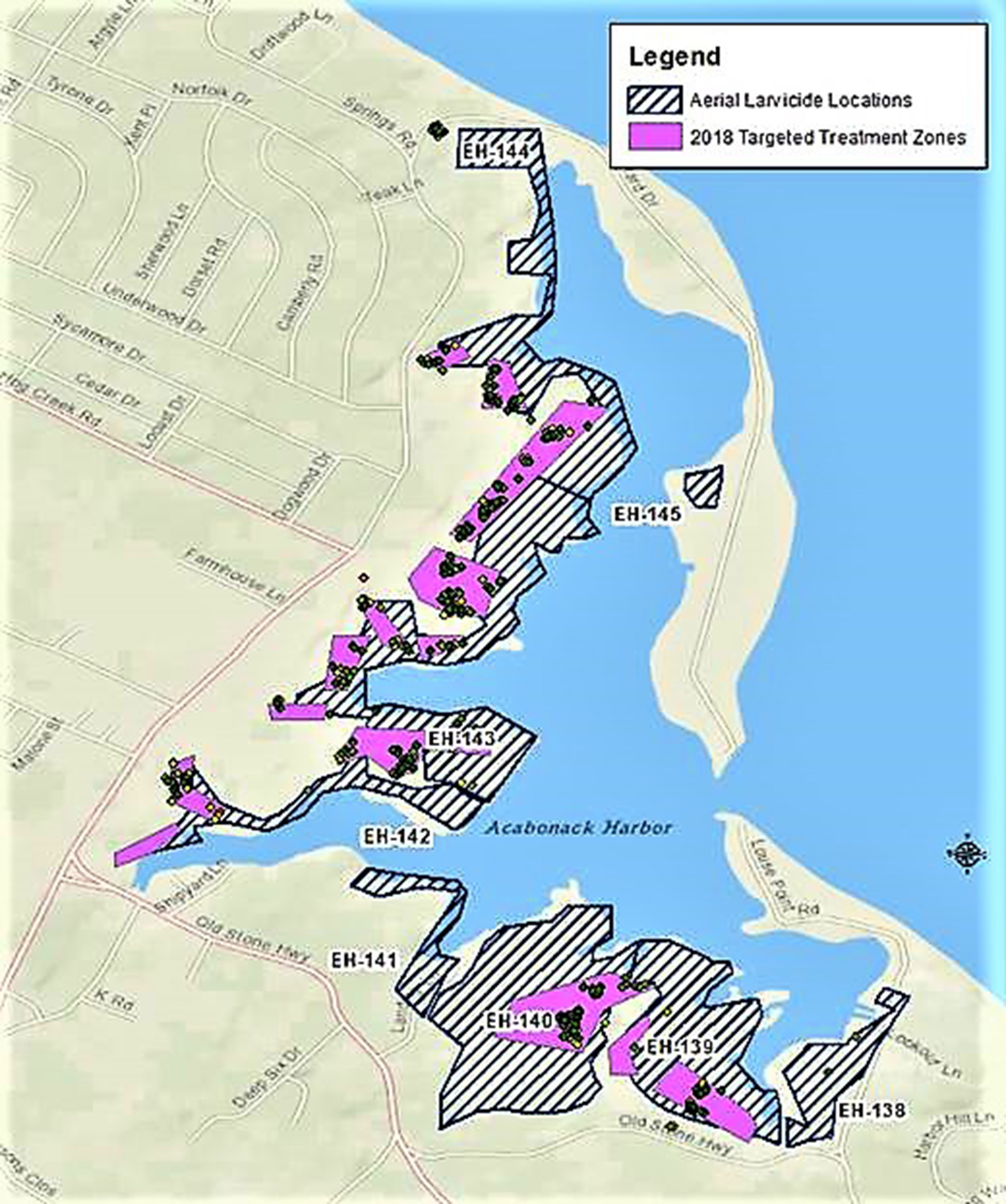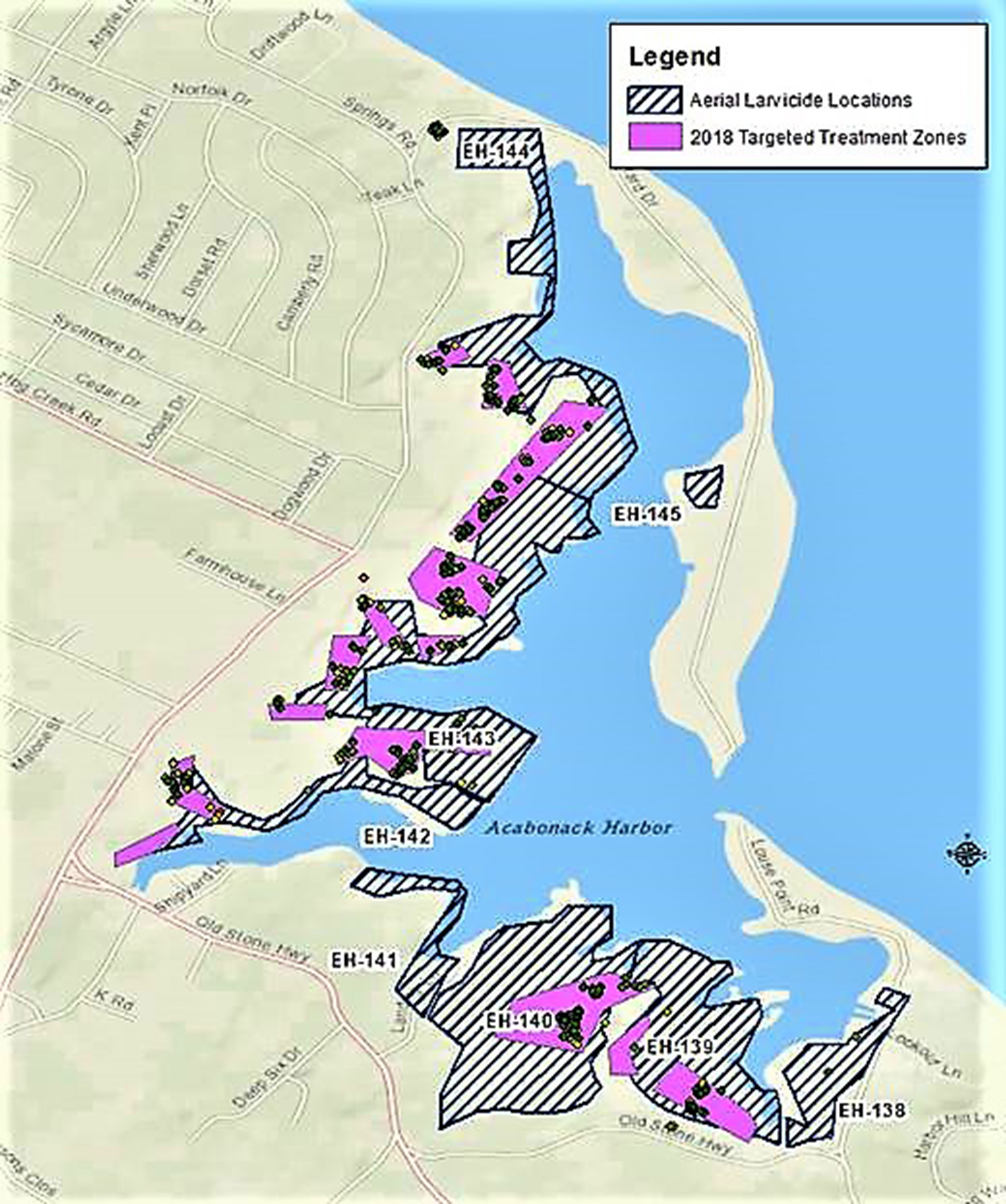Mosquito Spraying Reduced


Significantly less methoprene is being sprayed in Accabonac Harbor as part of a new cooperative program with County Vector Control, The Nature Conservancy, East Hampton Trustees, and Suffolk County Legislator Bridget Fleming. This program is in response to many years of concern over the potentially harmful effects of airborne pesticides that are sprayed in over 190 acres of wetlands at Accabonac Harbor. This pristine area off Gardiners Bay in East Hampton boasts a wide array of local wildlife and holds an important role in the ecosystem. Fleming brought The Nature Conservancy, Suffolk County Vector Control, the East Hampton Town Trustees, the Town of East Hampton, and 10 volunteer citizen-scientists together to address this issue.
Started in 2017, the program worked to reduce pesticide risks while still providing public health protection. The program, implemented for 11 weeks of the 2018 spraying season, from May 21 through September 21, was led by East Hampton Trustees Susan McGraw Keber and John Allred, Nicole Maher of The Nature Conservancy, and Environmental Technician with the Town of East Hampton Planning Department, Mike DeLalio. The team then collected dip samples at almost 6000 geographic information systems data points over the summer to test for the presence of mosquito larvae. The information was then sent to Suffolk County Vector Control where the staff mapped the larval distribution and reviewed the data for a treatment decision by the Director of Vector Control, Tom Iwanejko. If locations were discovered that required treatment, a helicopter was sent to spray the “hot spots” within the area.
The results clearly showed that the need for pesticides in certain locations was significantly lower than previously estimated. Only 544 out of 6000 samples contained mosquito larvae, in an area of 70 acres out of 190 acres. The reduction in the amount of spray needed and the reduction in helicopter usage saved the county an estimated $18,000. In addition, the treatments targeting the points identified by the team showed that breeding was predominantly along the upper marsh edge, and applications were therefore moved away from the harbor and potential direct contact with the bay.
The team has continued to identify hot spots where wetland restoration processes will reduce the number of mosquito larvae. For example, during initial surveying in 2017, the team observed a sunken boat sitting in shallow waters that was harboring larvae breeding. The town trustees removed the boat, eliminating the breeding area and the need for pesticide applications at that spot. Pesticide applications decreased by 50 percent in 2018 and no spray was determined to be needed for four of the 11 total weeks, with an additional two weeks without spraying during other times. These processes reduce potential contamination, increase taxpayer savings, and decrease the risk of contracting mosquito-borne diseases.
justin@indyeastend.com



